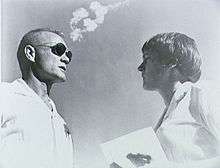Space nursing

Space nursing is the nursing speciality that studies how space travel impacts human response patterns. Similar to space medicine, the speciality also contributes to knowledge about nursing care of earthbound patients.[1]
History
Since the beginning of commercial aviation in the 1920s, nurses have been part of aviation and flight. In 1958, President Eisenhower signed the National Aeronautics and Space Act to form NASA. Part of this act was to recruit nurses to work closely with medical teams to determine the fitness of astronauts for space exploration. Nurses helped observe the effects of spaceflight on astronauts upon their return from missions.[2]
Lt Dolores O'Hara and Lt Shirley Sineath were the first nurses assigned to work with the first seven Project Mercury astronauts. O'Hara was the official staff nurse to astronauts. Before every launch she performed the pre-flight physicals including height, weight, temperatures, blood pressure measurements.[3] The astronauts would not agree to let anyone else but O'Hara drew blood before launch.[4] They worked to develop emergency hospital kits for the astronauts. These nurses had to ensure that the astronauts could manage casualties, plan for disaster control, and provide first aid in the event of an emergency. Lieutenant Shirley Sineath was assigned as a surgical nurse on the recovery team.[5]
In 1962. NASA announced the Space Nursing Program which required applicants to have a previous bachelor's degree in nursing.
In 1991, the Space Nursing Society was founded by Linda Plush with the help of Dr. Martha Rogers. It is based on Rogers' Theory, the Science of unitary human beings.[6]
See also
References
- ↑ Perrin, MM (Sep 1985). "Space nursing. A professional challenge". Nurs Clin North Am. 20 (3): 497–503. PMID 3851391.
- ↑ Lay, F (1959). "Next stop--outer space". Am J Nurs: 59971–973.
- ↑ "Dolores B. "Dee" O'Hara on the NASA Johnson Space Center Oral History Project". NASA Johnson Space Center. 23 April 2002.
- ↑ "Nursing NASA astronauts". Space Boffins podcast (Podcast). The Naked Scientists. September 10, 2016. Retrieved July 8, 2018.
- ↑ Shayler David and Ian A. Moule. Women in Space - Following Valentina. p. 72.
- ↑ Rogers, Martha (1992). "Nursing science and the space age". Nurs Sci Q. 5 (1): 27–34. doi:10.1177/089431849200500108. PMID 1538852.
